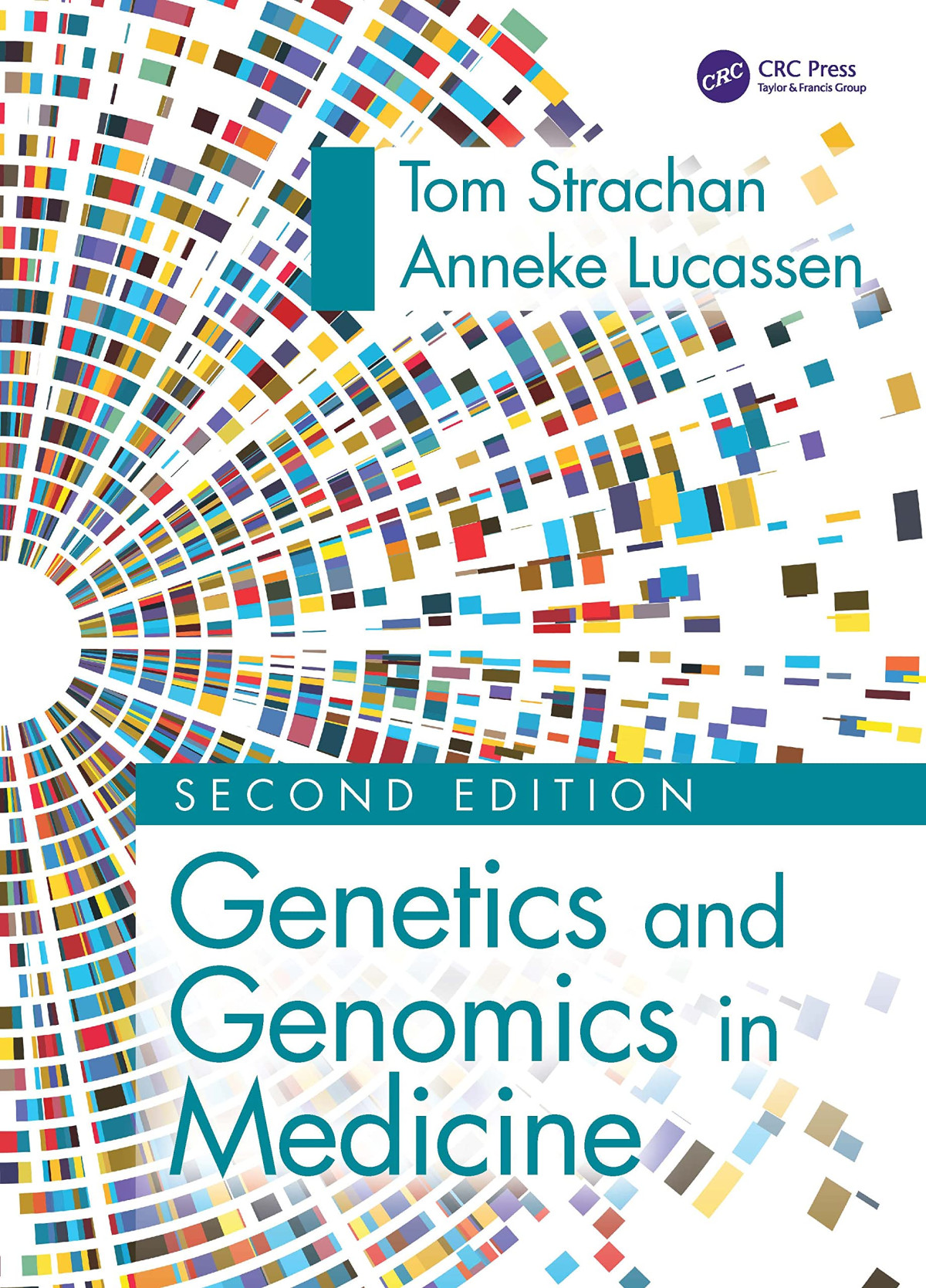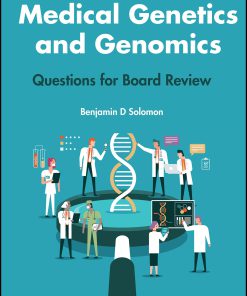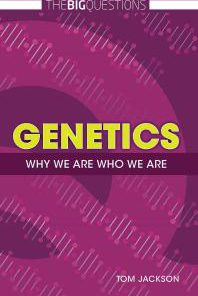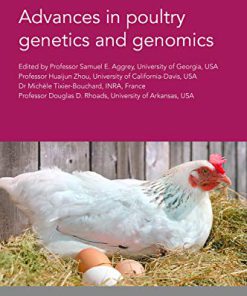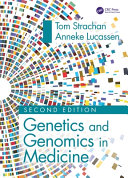Genetics and Genomics in Medicine 2nd Edition by Tom Strachan, Anneke Lucassen 9781000579376 1000579379
$50.00 Original price was: $50.00.$25.00Current price is: $25.00.
Genetics and Genomics in Medicine 2nd Edition Tom Strachan Anneke Lucassen – Ebook PDF Instant Download/Delivery, ISBN: 9781000579376, 1000579379
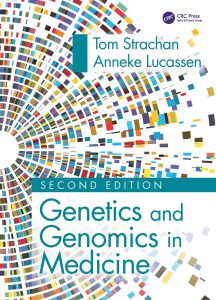
Product details:
- ISBN 10:1000579379
- ISBN 13:9781000579376
- Author: Tom Strachan, Anneke Lucassen 9781000579376 1000579379
Genetics and Genomics in Medicine
Table contents:
1 Fundamentals of DNA, Chromosomes, and Cells
1.1 The Structure and Function of Nucleic Acids
General concepts: the genetic material, genomes, and genes
The underlying chemistry of nucleic acids
Base pairing and the double helix
DNA replication and DNA polymerases
Genes, transcription, and the central dogma of molecular biology
1.2 The Structure and Function of Chromosomes
Why we need highly structured chromosomes, and how they are organized
Chromosome function: replication origins, centromeres, and telomeres
1.3 DNA and Chromosomes in Cell Division and the Cell Cycle
Differences in DNA copy number between cells
The cell cycle and segregation of replicated chromosomes and DNA molecules
Mitosis: the usual form of cell division
Meiosis: a specialized reductive cell division giving rise to sperm and egg cells
Why each of our gametes is unique
Summary
Questions
Further Reading
2 Fundamentals of Gene Structure, Gene Expression, and Human Genome Organization
2.1 Protein-Coding Genes: Structure and Expression
Gene organization: exons and introns
RNA splicing: stitching together the genetic information in exons
Translation: decoding messenger RNA to make a polypeptide
From newly synthesized polypeptide to mature protein
2.2 RNA Genes and Noncoding RNA
The extraordinary secondary structure and versatility of RNA
RNAs that act as specific regulators: from quirky exceptions to the mainstream
2.3 Working Out the Details of Our Genome and What They Mean
The Human Genome Project: working out the details of the nuclear genome
What the sequence didn’t tell us and the goal of identifying all functional human DNA sequences
2.4 A Quick Tour of Some Electronic Resources Used to Interrogate the Human Genome Sequence and Gene Products
Gene nomenclature and the HGNC gateway
Databases storing nucleotide and protein sequences
Finding related nucleotide and protein sequences
Links to clinical databases
2.5 The Organization and Evolution of the Human Genome
A brief overview of the evolutionary mechanisms that shaped our genome
How much of our genome is functionally significant?
The mitochondrial genome: economical usage but limited autonomy
Gene distribution in the human genome
The extent of repetitive DNA in the human genome
The organization of gene families
The significance of gene duplication and repetitive coding DNA
Highly repetitive noncoding DNA in the human genome
Summary
Questions
Further Reading
3 Principles Underlying Core DNA Technologies
3.1 Amplifying DNA by DNA Cloning
Amplifying desired DNA within bacterial cells
The need for vector DNA molecules
Physical clone separation
The need for restriction nucleases
DNA libraries and the uses and limitations of DNA cloning
3.2 Amplifying DNA Using the Polymerase Chain Reaction (PCR)
Basics of the polymerase chain reaction (PCR)
Quantitative PCR and real-time PCR
3.3 Principles of Nucleic Acid Hybridization
Formation of artificial heteroduplexes
Hybridization assays: using known nucleic acids to find related sequences in a test nucleic acid population
Microarray hybridization: large-scale parallel hybridization to immobilized probes
3.4 Principles of DNA Sequencing
Dideoxy DNA sequencing
Massively parallel DNA sequencing (next-generation sequencing)
Summary
Questions
Further Reading
4 Principles of Genetic Variation
4.1 DNA Sequence Variation Origins and DNA Repair
Genetic variation arising from errors in chromosome and DNA function
Various endogenous and exogenous sources can cause damage to DNA by altering its chemical structure
The wide range of DNA repair mechanisms
Repair of DNA damage or altered sequence on a single DNA strand
Repair of DNA lesions that affect both DNA strands
Undetected DNA damage, DNA damage tolerance, and translesion synthesis
4.2 Population Genomics and the Scale of Human Genetic Variation
DNA variants, polymorphisms, and human population genomics
Small-scale variation: single nucleotide variants and small insertions and deletions
Microsatellites and other variable number of tandem repeat (VNTR) polymorphisms
Structural variation and low copy number variation
Taking stock of human genetic variation
4.3 Functional Genetic Variation and Protein Polymorphism
The vast majority of genetic variation has a neutral effect on the phenotype, but a small fraction is harmful
Different types of Darwinian natural selection operate in human lineages
Generating protein diversity by gene duplication: the example of olfactory receptor genes
4.4 Extraordinary Genetic Variation in the Immune System
Pronounced genetic variation in four classes of immune system proteins
Programmed and random post-zygotic genetic variation
Somatic mechanisms allow cell-specific production of immunoglobulins and T-cell receptors
MHC (HLA) proteins: functions and polymorphism
The medical importance of the HLA system
Summary
Questions
Further Reading
5 Single-Gene Disorders: Inheritance Patterns, Phenotype Variability, and Allele Frequencies
5.1 Introduction: Terminology, Electronic Resources, and Pedigrees
Background terminology and electronic resources with information on single-gene disorders
Investigating family history of disease and recording pedigrees
5.2 The Basics of Mendelian and Mitochondrial DNA Inheritance Patterns
Autosomal dominant inheritance
Autosomal recessive inheritance
Sex-linked inheritance
Matrilineal inheritance for mitochondrial DNA disorders
5.3 Uncertainty, Heterogeneity, and Variable Expression of Mendelian Phenotypes
Difficulties in defining the mode of inheritance in small pedigrees
Heterogeneity in the correspondence between phenotypes and the underlying genes and mutations
Nonpenetrance and age-related penetrance
5.4 Allele Frequencies in Populations
Allele frequencies and the Hardy-Weinberg law
Applications and limitations of the Hardy-Weinberg law
Ways in which allele frequencies change in populations
Population bottlenecks and founder effects
Mutation versus selection in determining allele frequencies
Heterozygote advantage: when natural selection favors carriers of recessive disease
Summary
Questions
Further Reading
6 Principles of Gene Regulation and Epigenetics
The two fundamental types of gene regulation
Cis-acting and trans-acting effects in gene regulation
6.1 Genetic Regulation of Gene Expression
Promoters: the major on–off switches in genes
Modulating transcription and tissue-specific regulation
Transcription factor binding and specificity
Genetic regulation during RNA processing: RNA splicing and RNA editing
Translational regulation by trans-acting regulatory proteins
Post-transcriptional gene silencing by microRNAs
Repressing the repressors: competing endogenous RNAs sequester miRNA
6.2 Chromatin Modification and Epigenetic Factors in Gene Regulation
An overview of the molecular basis of epigenetic mechanisms
How changes in chromatin structure produce altered gene expression
Histone modification and histone substitution in nucleosomes
Modified histones and histone variants affect chromatin structure
The function of DNA methylation in mammalian cells
DNA methylation: mechanisms, heritability, and global roles during early development and gametogenesis
Long noncoding RNAs in mammalian epigenetic regulation
Genomic imprinting: differential expression of maternally and paternally inherited alleles
X-chromosome inactivation: compensating for sex differences in gene dosage
6.3 Abnormal Epigenetic Regulation in Mendelian Disorders and Uniparental Disomy
Principles of epigenetic dysregulation
“Chromatin diseases” due to mutations in genes specifying chromatin modifiers
Disease resulting from dysregulation of heterochromatin
Uniparental disomy and disorders of imprinting
Abnormal gene regulation at imprinted loci
Summary
Questions
Further Reading
7 How Genetic Variation in DNA and Chromosomes Causes Disease
7.1 An Overview of How Genetic Variation Results in Disease
The importance of repeat sequences in triggering pathogenesis
7.2 Pathogenic Nucleotide Substitutions and Tiny Insertions and Deletions
Pathogenic single nucleotide substitutions within coding sequences
Mutations that result in premature termination codons
Genesis and frequency of pathogenic point mutations
Surveying and curating point mutations that cause disease
7.3 Pathogenesis Due to Variation in Short Tandem Repeat Copy Number
The two main classes of pathogenic variation in short tandem repeat copy-number
Dynamic disease-causing mutations due to unstable expansion of short tandem repeats
Unstable expansion of short tandem repeats can cause disease in different ways
7.4 Pathogenesis Triggered by Long Tandem Repeats and Interspersed Repeats
Pathogenic exchanges between repeats occurs in both nuclear DNA and mtDNA
Nonallelic homologous recombination and transposition
Pathogenic sequence exchanges between chromatids at mispaired tandem repeats
Disease arising from sequence exchanges between distantly located repeats in nuclear DNA
7.5 Chromosome Abnormalities
Structural chromosomal abnormalities
Chromosomal abnormalities involving gain or loss of complete chromosomes
7.6 Molecular Pathology of Mitochondrial Disorders
Mitochondrial disorders due to mtDNA mutation show maternal inheritance and variable proportions of mutant genotypes
The two major classes of pathogenic DNA variant in mtDNA: large deletions and point mutations
7.7 Effects on the Phenotype of Pathogenic Variants in Nuclear DNA
Mutations affecting how a single gene works: an overview of loss of function and gain of function
The effect of pathogenic variants depends on how the products of alleles interact: dominance and recessiveness revisited
Gain-of-function and loss-of-function mutations in the same gene can produce different phenotypes
Multiple gene dysregulation resulting from aneuploidies and mutations in regulatory genes
7.8 A Protein Structure Perspective of Molecular Pathology
Pathogenesis arising from protein misfolding
The many different ways in which protein aggregation can result in disease
7.9 Genotype–Phenotype Correlations and Why Monogenic Disorders are Often Not Simple
The difficulty in getting reliable genotype–phenotype correlations
Modifier genes and environmental factors: common explanations for poor genotype–phenotype correlations
Summary
Questions
Further Reading
8 Identifying Disease Genes and Genetic Susceptibility to Complex Disease
8.1 Identifying Genes in Monogenic Disorders
A historical overview of identifying genes in monogenic disorders
Linkage analysis to map genes for monogenic disorders to defined subchromosomal regions
Chromosome abnormalities and other large-scale mutations as routes to identifying disease genes
Exome sequencing: let’s not bother getting a position for disease genes!
8.2 Approaches to Mapping and Identifying Genetic Susceptibility to Complex Disease
The polygenic and multifactorial nature of common genetic disorders
Difficulties with lack of penetrance and phenotype classification in complex disease
Estimating heritability: the contribution made by genetic factors to the variance of complex diseases
The very limited success of linkage analyses in identifying genes underlying complex genetic diseases
The fundamentals of allelic association and the importance of HLA-disease associations
Linkage disequilibrium as the basis of allelic associations
How genomewide association studies are carried out
Moving from candidate subchromosomal region to identify causal genetic variants in complex disease can be challenging
The limitations of GWA studies and the issue of missing heritability
Alternative genome-wide studies and the role of rare variants and copy number variants in complex disease
The assessment and prediction of risk for common genetic diseases and the development of polygenic risk scores
8.3 Aspects of the Genetic Architecture of Complex Disease and the Contributions of Environmental and Epigenetic Factors
Common neurodegenerative disease: from monogenic to polygenic disease
The importance of immune system pathways in common genetic disease
The importance of protective factors and how a susceptibility factor for one complex disease may be a protective factor for another disease
Gene–environment interactions in complex disease
Epigenetics in complex disease and aging: significance and experimental approaches
Summary
Questions
Further Reading
9 Genetic Approaches to Treating Disease
9.1 An Overview of Treating Genetic Disease and of Genetic Treatment of Disease
Three different broad approaches to treating genetic disorders
Very different treatment options for different inborn errors of metabolism
Genetic treatment of disease may be conducted at many different levels
9.2 Genetic Inputs into Treating Disease with Small Molecule Drugs and Therapeutic Proteins
An overview of how genetic differences affect the metabolism and performance of small molecule drugs
Phenotype differences arising from genetic variation in drug metabolism
Genetic variation in enzymes that work in phase II drug metabolism
Altered drug responses resulting from genetic variation in drug targets
When genotypes at multiple loci in patients are important in drug treatment: the example of warfarin
Translating genetic advances: from identifying novel disease genes to therapeutic small molecule drugs
Translating genomic advances and developing generic drugs as a way of overcoming the problem of too few drug targets
Developing biological drugs: therapeutic proteins produced by genetic engineering
Genetically engineered therapeutic antibodies with improved therapeutic potential
9.3 Principles of Gene and Cell Therapy
Two broad strategies in somatic gene therapy
The delivery problem: designing optimal and safe strategies for getting genetic constructs into the cells of patients
Different ways of delivering therapeutic genetic constructs, and the advantages of ex vivo gene therapy
Viral delivery of therapeutic gene constructs: relatively high efficiency but safety concerns
Virus vectors used in gene therapy
The importance of disease models for testing potential therapies in humans
9.4 Gene Therapy for Inherited Disorders: Practice and Future Directions
Multiple successes for ex vivo gene supplementation therapy targeted at hematopoietic stem cells
In vivo gene therapy: approaches, barriers, and recent successes
An overview of RNA and oligonucleotide therapeutics
RNA interference therapy
Future therapeutic prospects using CRISPR-Cas gene editing
Therapeutic applications of stem cells and cell reprogramming
Obstacles to overcome in cell therapy
A special case: preventing transmission of severe mitochondrial DNA disorders by mitochondrial replacement
Summary
Questions
Further Reading
10 Cancer Genetics and Genomics
10.1 Fundamental Characteristics and Evolution of Cancer
The defining features of unregulated cell growth and cancer
Why cancers are different from other diseases: the contest between natural selection operating at the level of the cell and the level of the organism
Cancer cells acquire several distinguishing biological characteristics during their evolution
The initiation and multistage nature of cancer evolution and why most human cancers develop over many decades
Intratumor heterogeneity arises through cell infiltration, clonal evolution, and differentiation of cancer stem cells
10.2 Oncogenes and Tumor Suppressor Genes
Two fundamental classes of cancer gene
Viral oncogenes and the natural roles of cellular oncogenes
How normal cellular proto-oncogenes are activated to become cancer genes
Tumor suppressor genes: normal functions, the two-hit paradigm, and loss of heterozygosity in linked markers
The key roles of gatekeeper tumor suppressor genes in suppressing G1-S transition in the cell cycle
The additional role of p53 in activating different apoptosis pathways to ensure that rogue cells are destroyed
Tumor suppressor involvement in rare familial cancers and non-classical tumor suppressors
The significance of miRNAs and long noncoding RNAs in cancer
10.3 Genomic Instability and Epigenetic Dysregulation in Cancer
Different types of chromosomal instability in cancer
Deficiency in mismatch repair results in unrepaired replication errors and global DNA instability
Different classes of cancer susceptibility gene according to epigenetic function, epigenetic dysregulation, and epigenome–genome interaction
10.4 New Insights from Genome-Wide Studies of Cancers
Genome sequencing has revealed extraordinary mutational diversity in tumors and insights into cancer evolution
Defining the landscape of driver mutations in cancer and establishing a complete inventory of cancer-susceptibility genes
Tracing the mutational history of cancers: just one of the diverse applications of single-cell genomics and transcriptomics in cancer
Genome-wide RNA sequencing enables insights into the link between cancer genomes and cancer biology and aids tumor classification
10.5 Genetic Inroads into Cancer Therapy
Targeted anticancer therapies are directed against key cancer cell proteins involved in oncogenesis or in escaping immunosurveillance
CAR-T Cell therapy and the use of genetically engineered T cells to treat cancer
The molecular basis of tumor recurrence and the evolution of drug resistance in cancers
The promise of combinatorial drug therapies
Summary
Questions
Further Reading
11 Genetic and Genomic Testing in Healthcare: Practical and Ethical Aspects
11.1 An Overview of Genetic Testing
The different source materials and different levels of genetic testing
11.2 Genetic Testing for Chromosome Abnormalities and Pathogenic Structural Variation
Screening for aneuploidies using quantitative fluorescence PCR
Detecting large-scale copy number variants using chromosome SNP microarray analysis
Detecting and scanning for oncogenic fusion genes using, respectively, chromosome FISH and targeted RNA sequencing
Detecting pathogenic moderate- to small-scale deletions and duplications at defined loci is often achieved using the MLPA or ddPCR methods
Two very different routes towards universal genome-wide screens for structural variation: genome-wide sequencing and optical genome mapping
11.3 Genetic and Genomic Testing for Pathogenic Point Mutations and DNA Methylation Testing
Diverse methods permit rapid genotyping of specific point mutations
The advantages of multiplex genotyping
Mutation scanning: from genes and gene panels to whole exome and whole genome sequencing
Interpreting and validating sequence variants can be aided by extensive online resources
Detecting aberrant DNA methylation profiles associated with disease
11.4 Genetic and Genomic Testing: Organization of Services and Practical Applications
The developing transformation of genetic services into mainstream genomic medicine
An overview of diagnostic and pre-symptomatic or predictive genetic testing
The different ways in which diagnosis of genetic conditions is carried out in the prenatal period
Preimplantation genetic testing is carried out to prevent the transmission of a harmful genetic defect using in vitro fertilization
Noninvasive prenatal testing (NIPT) and whole genome testing of the fetus
An overview of the different types of genetic screening
Pregnancy screening for fetal abnormalities
Newborn screening allows the possibility of early medical intervention
Different types of carrier screening can be carried out for autosomal recessive conditions
New genomic technologies are being exploited in cancer diagnostics
Bypassing healthcare services: the rise of direct-to-consumer (DTC) genetic testing
The downsides of improved sensitivity through whole genome sequencing: increased uncertainty about what variants mean
11.5 Ethical, Legal, and Societal Issues (ELSI) in Genetic Testing
Genetic information as family information
Consent issues in genetic testing
The generation of genetic data is outstripping the ability to provide clinical interpretation
New disease gene discovery and changing concepts of diagnosis
Complications in diagnosing mitochondrial disease
Complications arising from incidental, additional, secondary, or unexpected information
Consent issues in testing children
Ethical and societal issues in prenatal diagnosis and testing
Ethical and social issues in some emerging treatments for genetic disorders
The ethics of germline gene modification for gene therapy and genetic enhancement
People also search:
genetics and genomics in medicine
thompson & thompson genetics and genomics in medicine
thompson & thompson genetics and genomics in medicine 9th edition
genetics and genomics in medicine pdf
thompson & thompson genetics and genomics in medicine pdf
You may also like…
Uncategorized
Medical Genetics and Genomics Questions for Board Review 1st Edition Benjamin D Solomon
Uncategorized
Biology and other natural sciences - Genetics
Population Genetics and Microevolutionary Theory 2nd Edition Alan R. Templeton
Biology and other natural sciences - Genetics
Genetics and Genomics in Medicine, 2nd Edition 2023 Tom Strachan

